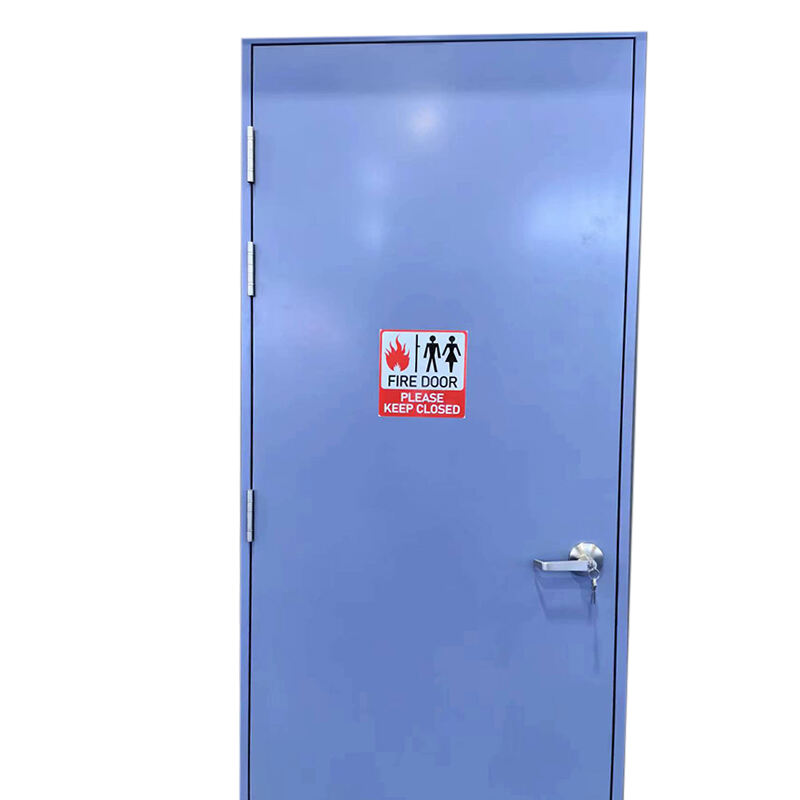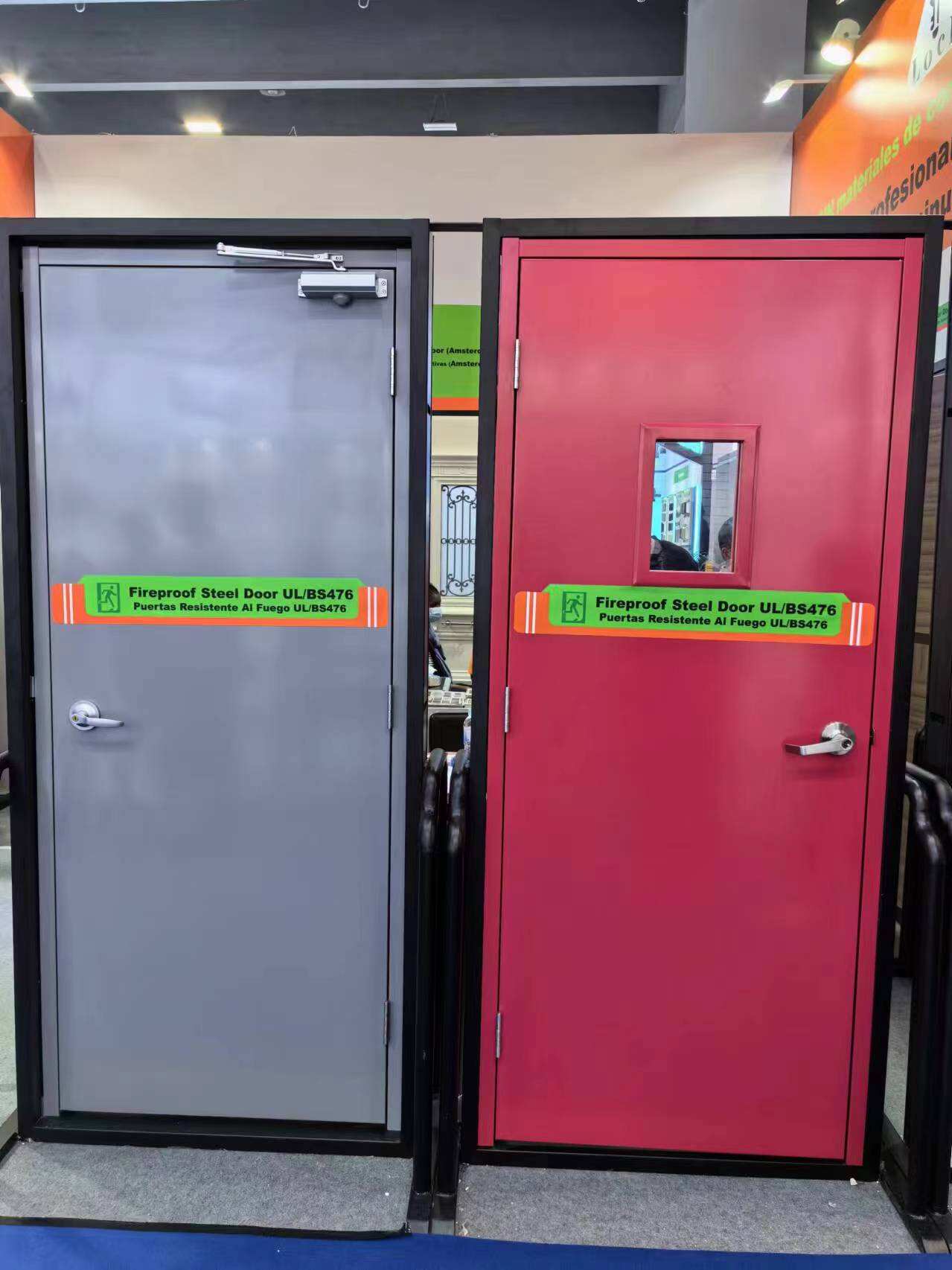How Do Fire Doors Help Enhance Building Safety and Compliance?
Building safety is one of the most important priorities in architectural design, property management, and facility operations. From residential towers to commercial complexes, safety measures are put in place to protect lives and property in case of emergencies. Among these measures, fire doors play a particularly vital role. These specialized doors are not just ordinary building components; they are critical elements of fire safety systems. Their purpose is to limit the spread of fire and smoke, provide safe evacuation routes, and ensure compliance with fire safety regulations.
In this article, we will explore how fire doors enhance overall building safety while simultaneously ensuring compliance with legal and regulatory requirements. We will look at their function in containing fire, protecting occupants, supporting evacuation strategies, and contributing to building code adherence. By the end, it will be clear why fire doors are considered indispensable in both new constructions and existing structures.
Understanding the Role of Fire Doors
Fire doors are engineered specifically to withstand high temperatures and block the passage of flames and smoke for a defined period. Unlike regular doors, they are constructed with fire-resistant materials such as steel, gypsum, or specially treated timber. Many also incorporate intumescent seals that expand when exposed to heat, closing off gaps around the door and preventing smoke from seeping through.
These features transform fire doors into active safety barriers. When installed strategically in stairwells, corridors, and compartment walls, they compartmentalize a building into sections. This prevents fire from spreading unchecked, allowing occupants to escape safely while limiting damage to property.
Fire Doors and Life Safety
The most immediate way that fire doors enhance building safety is by protecting human life. In a fire, flames spread quickly, but smoke spreads even faster, often becoming the leading cause of fatalities. Fire doors block both, keeping escape routes such as staircases and hallways clear long enough for occupants to evacuate.
For example, in a multi-story office building, fire doors installed at every stairwell ensure that smoke does not render evacuation routes unusable. In healthcare facilities, fire doors installed between wards provide staff with the crucial extra time needed to evacuate patients. These life-saving benefits make fire doors one of the most important safety features in modern buildings.
Compliance with Fire Safety Regulations
One of the strongest reasons to install and maintain fire doors is compliance with building codes and fire safety laws. Regulations across the world mandate the installation of fire-rated doors in specific locations, such as exits, stairwells, and corridors. These requirements are based on detailed studies of fire behavior and evacuation dynamics.
Failure to comply with these regulations can result in severe consequences, including fines, closure of the facility, or liability in the event of injury or death. Insurance coverage may also be denied if it is found that fire safety systems, including fire doors, were neglected or non-compliant. Installing fire doors according to legal standards ensures that building owners meet their legal obligations while protecting occupants.

Containing Fire and Smoke
Compartmentation is the practice of dividing a building into zones to limit the spread of fire. Fire doors are central to this strategy. When closed, they form barriers that trap fire and smoke within a contained area. This not only protects occupants in other parts of the building but also reduces the scale of property damage.
By slowing down the spread of fire, fire doors give firefighters more control over the situation. They prevent fire from engulfing the entire building, confining it to a limited area. This makes it easier to suppress and minimizes the cost of recovery after the incident.
Supporting Safe Evacuation
During a fire, panic is common, and safe evacuation is often difficult. Fire doors support evacuation strategies by keeping exit routes accessible. Corridors and stairwells that would otherwise be filled with smoke remain usable when fire doors are correctly installed and functioning.
Self-closing mechanisms, often linked to fire alarm systems, ensure that fire doors shut automatically during an emergency. Even if they are normally held open for convenience, the system guarantees closure when needed, creating safe paths for escape. This automatic reliability reduces dependence on human intervention and enhances overall safety.
Protecting Property and Assets
Beyond saving lives, fire doors also protect valuable property and assets. Commercial buildings often house sensitive data, expensive equipment, and inventory worth millions. Fire doors confine fire to one section, preventing its spread to other areas.
For example, in a warehouse, fire doors between sections can keep a localized fire from destroying the entire stock. In offices, they protect critical areas such as server rooms and record storage. This protection reduces overall financial loss and speeds up recovery after a fire.
Insurance Benefits and Risk Reduction
Insurers view fire doors as a significant risk-reducing feature. Buildings equipped with compliant fire doors may qualify for reduced insurance premiums. Conversely, facilities without fire doors or with poorly maintained ones are considered higher risk and may face higher premiums or limited coverage.
In the event of a fire, proof that fire doors were installed and maintained can also influence insurance claims. By demonstrating compliance with safety standards, building owners protect themselves against disputes and claim denials.
Fire Doors and Business Continuity
A fire incident does not just cause physical damage; it can also disrupt business operations for weeks or months. Lost productivity, customer dissatisfaction, and reputational harm are indirect costs that may exceed the value of physical damage. Fire doors minimize business disruption by confining fire damage.
For example, in a hotel, fire doors may confine damage to a single floor, allowing the rest of the facility to remain open. In a factory, they can prevent a localized fire from shutting down the entire production line. By limiting damage, fire doors help businesses recover faster and maintain continuity.
Enhancing Building Design and Comfort
Modern fire doors are not only functional but also aesthetically versatile. They can be manufactured with wood veneers, glass panels, or custom finishes that integrate seamlessly with interior designs. This ensures that safety does not come at the expense of style.
Fire doors also offer additional benefits such as sound insulation and thermal efficiency. Their solid construction reduces noise transmission, creating quieter spaces in offices or hotels. Many fire doors are insulated, which improves energy efficiency by reducing heat transfer. These additional advantages make them an attractive choice for both safety and comfort.
The Importance of Regular Inspection and Maintenance
Fire doors only enhance safety if they are kept in working condition. Over time, hinges loosen, seals wear out, and closing devices fail. Regular inspections are required to ensure they remain compliant and functional.
Best practice guidelines recommend daily or weekly visual checks, monthly functional tests, and professional annual inspections. During inspections, attention should be given to door alignment, seals, self-closing devices, gaps, glazing, and hardware. Any defects should be repaired immediately using certified components.
Neglected fire doors may appear functional but fail during an emergency, compromising safety and compliance. Maintenance is therefore an integral part of building management.
Real-World Examples of Fire Door Effectiveness
Numerous fire incidents have demonstrated the value of fire doors. In several hotel and office fires, fire doors prevented smoke from entering stairwells, allowing guests and employees to escape safely. In warehouses, they have confined fires to a single section, saving millions in inventory. These examples underline the practical, life-saving function of fire doors beyond their theoretical benefits.
Legal and Ethical Responsibilities
Building owners and managers carry both legal and ethical responsibilities to protect occupants. Installing fire doors fulfills both. From a legal standpoint, it ensures compliance with building codes and fire safety regulations. From an ethical perspective, it demonstrates commitment to safeguarding lives. Neglecting fire doors is not only a violation of regulations but also a failure in duty of care.
Conclusion
Fire doors enhance building safety and compliance in multiple ways. They protect lives by containing fire and smoke, they safeguard property by limiting damage, and they ensure that buildings meet strict regulatory requirements. Their contribution to safe evacuation, property protection, insurance risk reduction, and business continuity makes them indispensable in modern building safety strategies.
While regular doors provide privacy and convenience, fire doors are active safety devices that require careful installation, inspection, and maintenance. Their presence represents a commitment to safety, responsibility, and resilience. For building owners, managers, and designers, prioritizing fire doors is not just about compliance but about creating environments where people can live and work with confidence.
FAQ
How often should fire doors be inspected?
Fire doors should be visually checked weekly and undergo professional inspection at least annually to ensure compliance and functionality.
Do fire doors really stop smoke?
Yes, many fire doors include smoke seals that prevent toxic gases from spreading into escape routes.
Are fire doors legally required?
Yes, most building codes require fire doors in commercial, residential, and industrial facilities, especially in stairwells, corridors, and exits.
Can fire doors look like normal doors?
Modern fire doors are available in many finishes, including wood and glass, allowing them to match interior aesthetics while maintaining fire safety.
What happens if fire doors are not maintained?
If not properly maintained, fire doors may fail during an emergency, leading to uncontrolled fire spread, legal liability, and invalidated insurance coverage.
Table of Contents
- How Do Fire Doors Help Enhance Building Safety and Compliance?
- Understanding the Role of Fire Doors
- Fire Doors and Life Safety
- Compliance with Fire Safety Regulations
- Containing Fire and Smoke
- Supporting Safe Evacuation
- Protecting Property and Assets
- Insurance Benefits and Risk Reduction
- Fire Doors and Business Continuity
- Enhancing Building Design and Comfort
- The Importance of Regular Inspection and Maintenance
- Real-World Examples of Fire Door Effectiveness
- Legal and Ethical Responsibilities
- Conclusion
- FAQ

